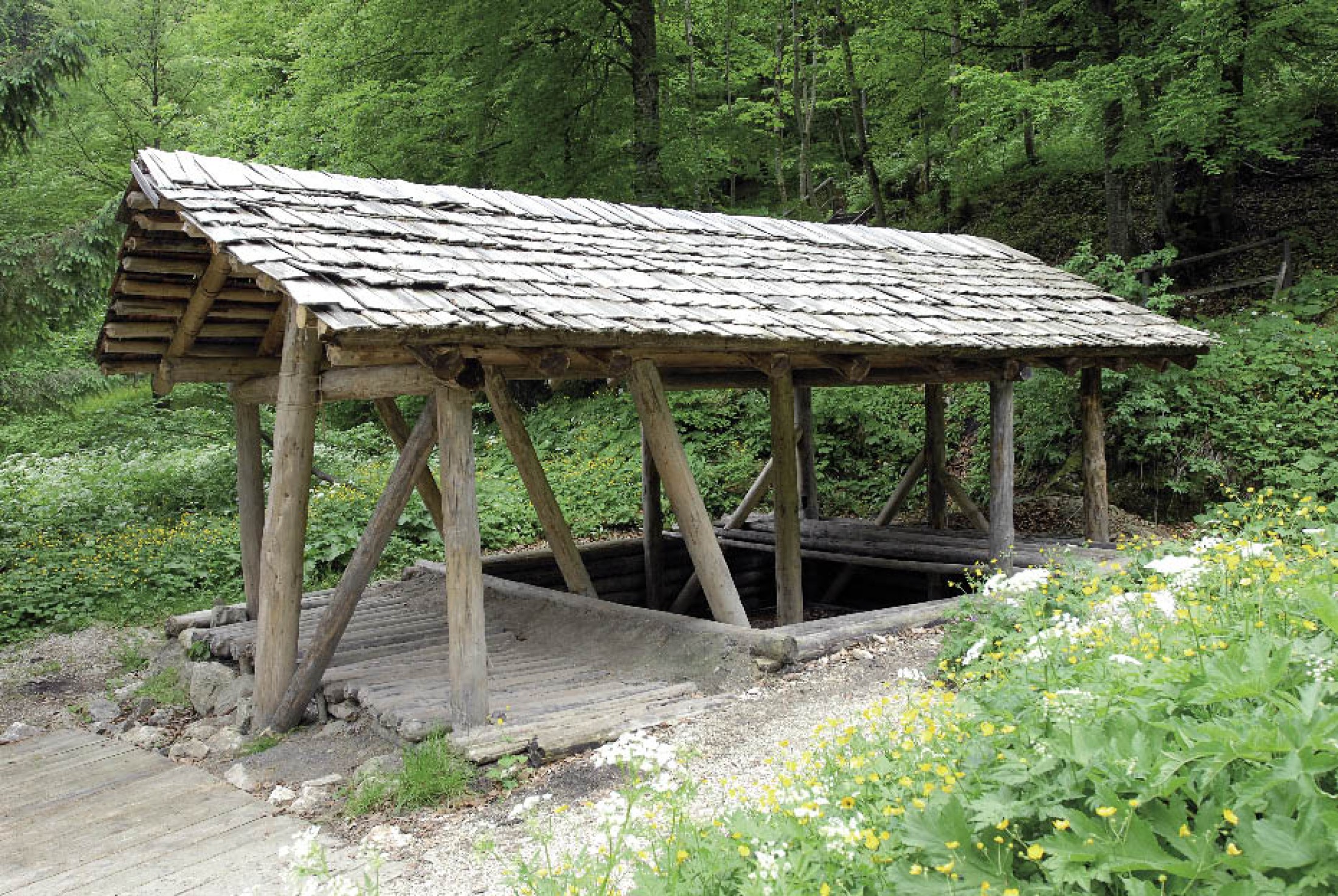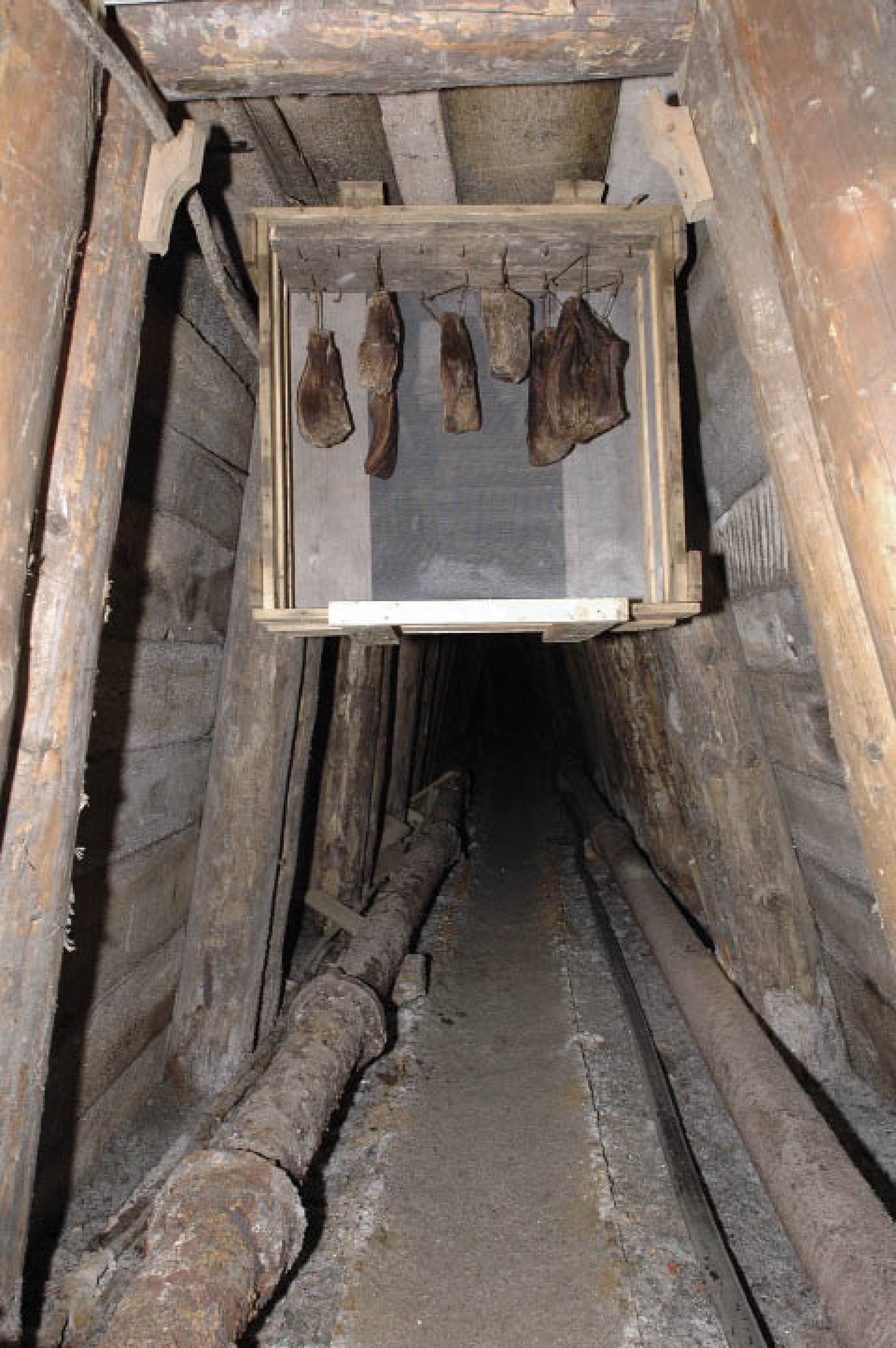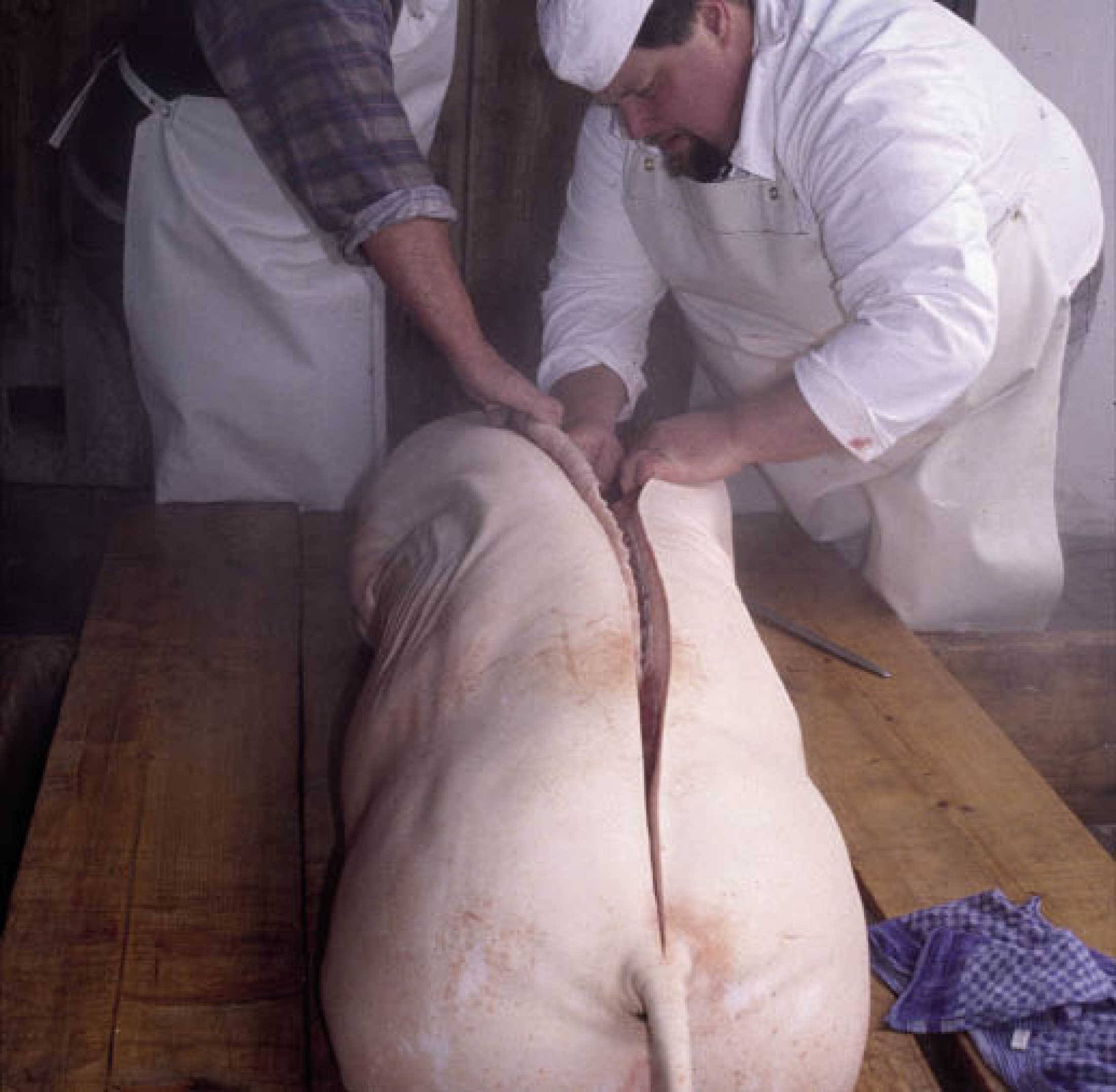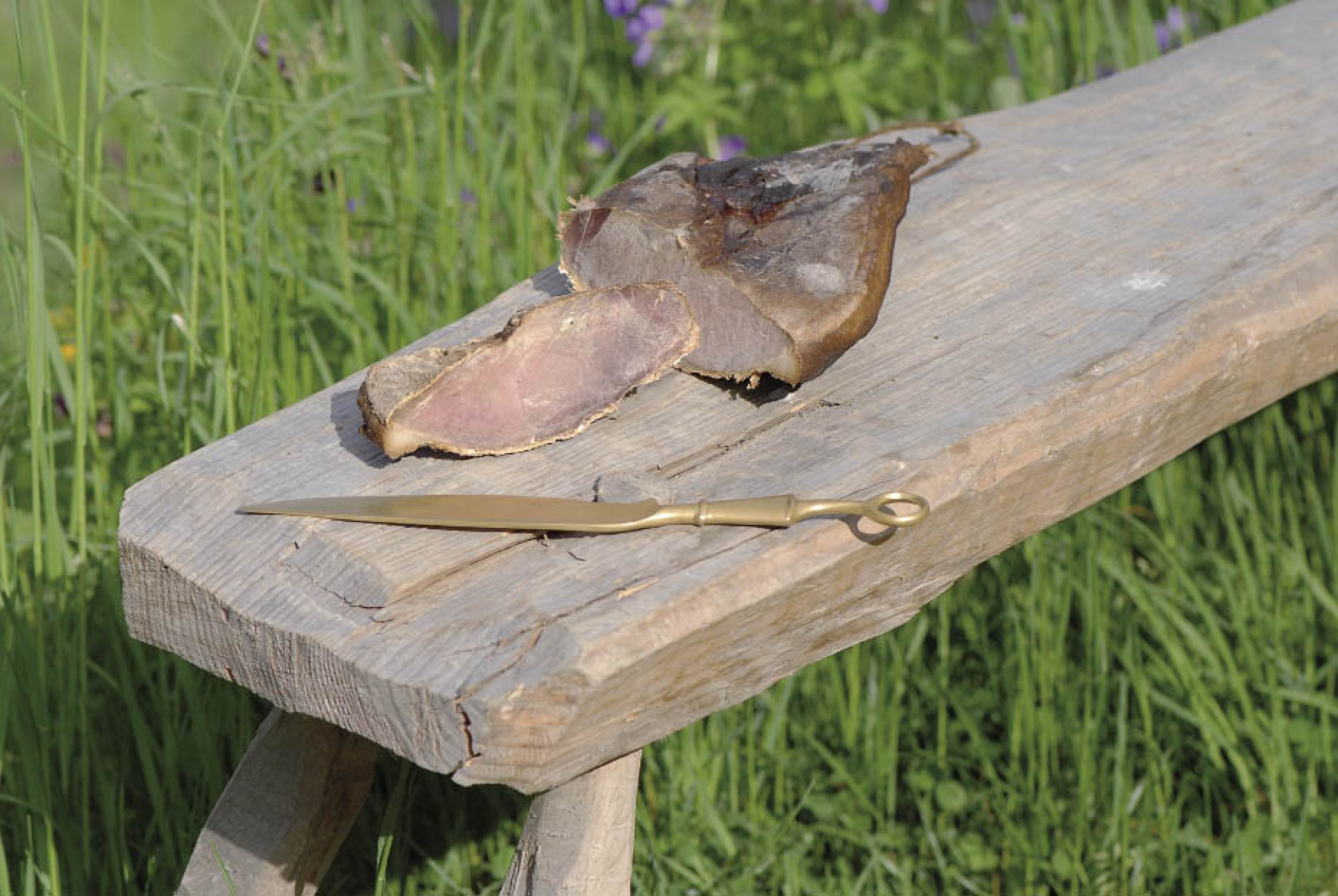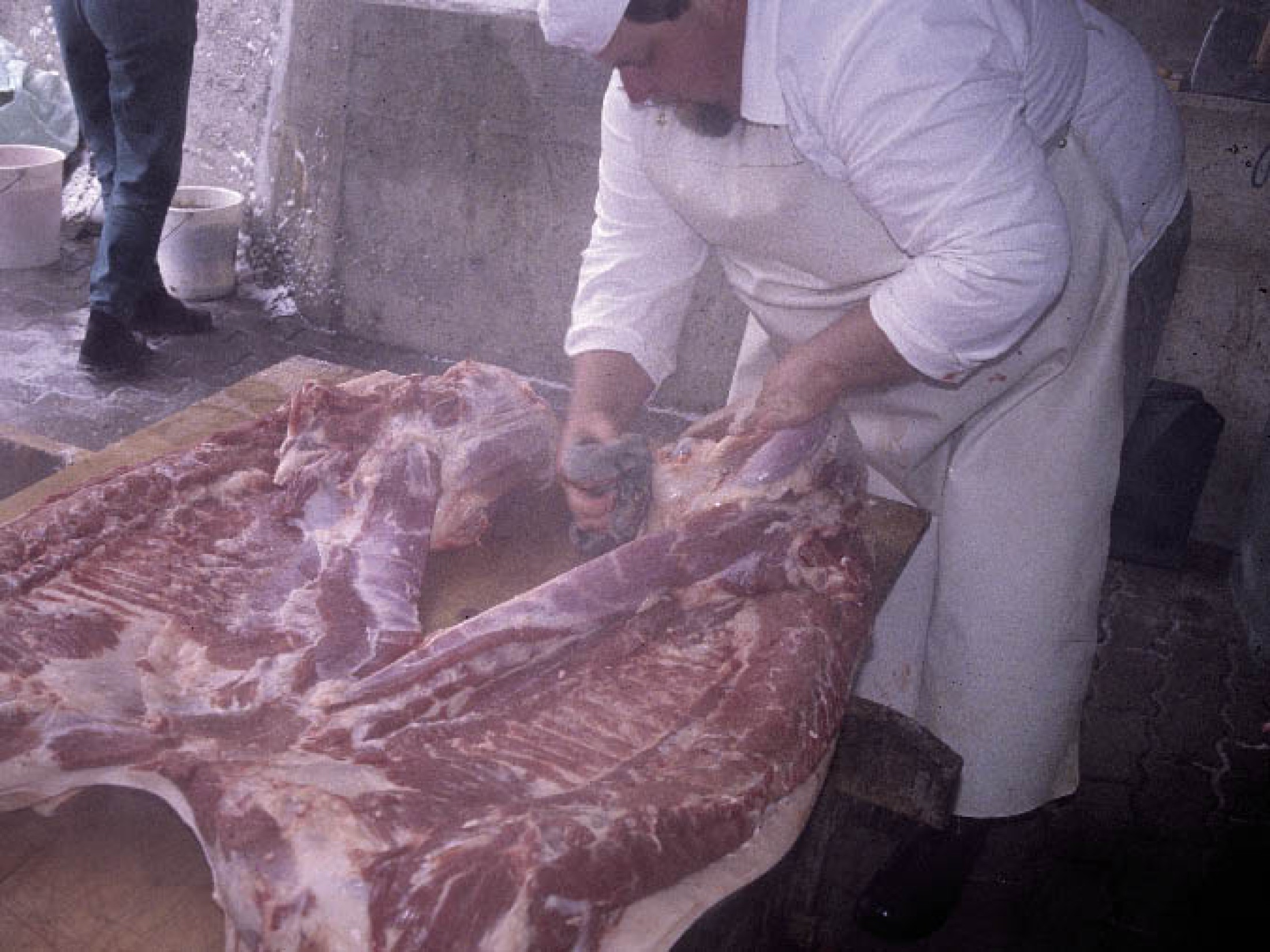Bronze Age meat processing around the mine in Hallstatt
Modern analyses have revealed that the Salzbergtal valley around Hallstatt was home to a meat processing industry during the Bronze Age. It is likely that selected pieces of meat, in particular pork, were transported into the valley for processing. Ethno-archaeological researchers have been able to determine similarities between the cuts of meat used in prehistoric times and those still used in the Alps today. It appears that the meat was cured in large vats. Experiments have shown that the mines in Hallstatt would have provided excellent conditions for cured meat to mature.Dissection techniques for slaughtered animals
Meat curing in wooden cabins
Maturing of meat in the mines
Dissection techniques for slaughtered animals
Archaeo-zoological analyses have revealed that a special technique very different from those commonly used today was employed in prehistoric times to dissect animals. This technique is still employed in a few regions of the Eastern Alps: in the production of the famous Gailtal bacon, the pig is also deboned dorsally with the ribs and the entrails, from the tail to the upper skull removed. The two boneless halves thus obtained can then be salted and smoked. It looks as if, in order to facilitate packing and transportation, ready-prepared, partially deboned carcasses were taken up the mountain at Hallstatt, with the lower jaws plausibly serving as a sort of handle.Meat curing in wooden cabins
The dimensions of the curing troughs, and the large number of pig bones, indicate that large quantities of pork were salted, some 150 or 200 carcasses per basin at a time – and we know of eight such basins! The salt required came from the mine; it was, however, not the high-quality, pure rock salt, but the lower-grade by-product known as Haselgebirge, a mixture of salt, clay and anhydrite.To ensure proper functioning, the timber trough had to be tightly waterproofed, and this is why a daub of grey mountain loam packed deep into the walls and over the bottom. Experiments have shown that sufficient salt penetration is achieved after ten days of brine curing and that the meat is at that point conserved.
Maturing of meat in the mines
Further curing could have occurred in the mine galleries. With the salt-saturated air full of smoke from the many fir tapers, a strong draught in the ventilation shafts, an average temperature of 7° C, and 60% humidity there was an ideal microclimate for the further improvement and maturation of the salted hams. The finds suggest that large quantities of ham and bacon, far beyond domestic requirements, were produced, and therefore traded.(Barth, F. E. – Reschreiter, H. – Kowarik, K. - Loew, C.)

